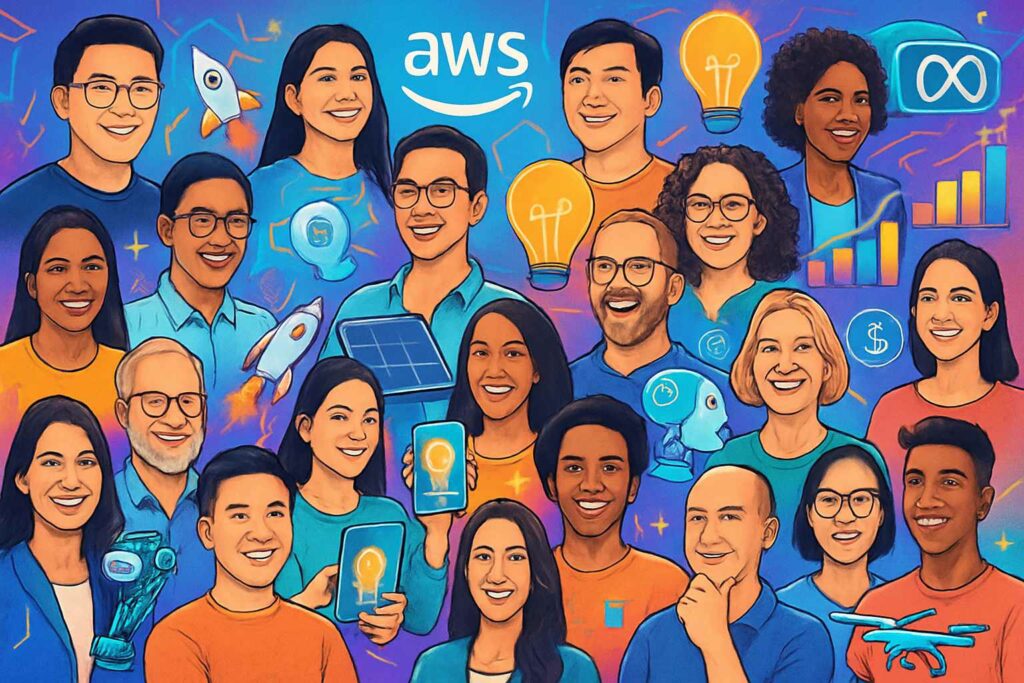
AI CERTS
4 hours ago
AWS–Meta Llama: 30 U.S. Startups Selection Wins $200K Boost

Nevertheless, eligibility remains strict, and application timelines are unforgiving. This article unpacks mechanics, benefits, risks, and strategic considerations for founders. It follows rigorous research and adheres to all program specifications.
Quick Program Overview Snapshot
Program operations run entirely online for six months. Moreover, sessions cover model fine-tuning, prompt engineering, and deployment best practices. Applications for the pilot closed at the August 8 2025 deadline after drawing 1,000 entries. AWS markets the cohort as a six-month accelerator that removes infrastructure friction. Meta positions Llama as open, flexible, and cost effective compared with proprietary rivals. Consequently, the joint initiative serves as an AI innovation catalyst for generative tooling startups.
- Up to $200K credits each from AWS.
- Up to $6K monthly reimbursements from Meta.
- Program duration: six months.
- Reported cohort size: 30–35 companies.
- Eligibility cap: less than $10M funding.
These metrics highlight generous yet targeted support. However, financial generosity alone does not guarantee success, as later sections explain.
Robust Financial Support Explained
Financial incentives headline every pitch deck, and this program excels here. Most notably, participants secure $200K credits each to cover compute, storage, and networking. Additionally, Meta reimburses up to $6,000 monthly for Llama inference, totaling $36,000. Therefore, startups can prototype aggressively without immediate cloud bills hitting their bank accounts. Nevertheless, credits expire after program completion, so founders must plan burn rates carefully. Experts advise locking efficient architectures early to stretch those $200K credits each across testing and launch. Generous credits and reimbursements extend runway for experimentation. Yet disciplined budget governance remains vital before spending spikes post cohort. The next criterion involves who actually qualifies for the package.
Eligibility And Selection Criteria
Eligibility parameters remain strict to focus resources on high-potential early builders. Consequently, companies must be U.S. incorporated, have raised under $10M, and employ at least one developer. Applicants also commit to building products centered on Llama models. Meta and AWS reported the 30 U.S. startups selection rate sat near three percent. In contrast, many global applicants were declined due to geography. Meanwhile, the August 8 2025 deadline will recur for subsequent cohorts unless schedules shift. Strict criteria sharpen cohort quality and ensure resource focus. However, limited eligibility fuels debates on equitable access, detailed next.
Technical Mentoring Benefits Overview
Beyond cash, founders praise direct access to Meta Llama engineers. Moreover, weekly office hours dissect fine-tuning methods, evaluation benchmarks, and responsible deployment patterns. AWS architects concurrently guide cost optimization, scaling, and security configurations. Such combined coaching transforms the accelerator into an AI innovation catalyst for diverse verticals. For example, Vikk AI tunes legal reasoning while Strike Graph perfects compliance dialogue flows. Additionally, participants can pursue the AI Foundation™ certification to solidify conceptual grounding. Mentors emphasise model safety, latency reduction, and prompt governance. Consequently, startups exit the six-month accelerator with production-ready architectures and documented best practices. Holistic mentorship accelerates product maturity within months. Yet reliance on vendor specific tooling introduces certain strategic risks, which follow next.
Risks And Future Outlook
Vendor lock-in tops the analyst worry list. Therefore, dependence on AWS credits and Llama weights could hinder later stack diversification. Regulators also scrutinize credit programs for anticompetitive dynamics. Meanwhile, model safety controversies linger as Llama continues rapid iterations. Nevertheless, Meta promises frequent updates and responsible release checks. Founders must design monitoring pipelines that survive beyond the August 8 2025 deadline constraint. Market momentum remains strong, given relentless demand for generative AI solutions. Consequently, the 30 U.S. startups selection acts as bellwether for broader enterprise adoption. Observers expect future cohorts, though size and timing could fluctuate. Risk management will distinguish sustainable winners from hype casualties. Accordingly, strategic guidance helps founders navigate these complexities, explored next.
Strategic Guidance For Founders
First, draft a credit allocation roadmap before deployment begins. Additionally, implement cost dashboards to flag runaway inference jobs early. Second, abstract model calls so future migrations remain feasible if incentives vanish. Third, build responsible AI guardrails that exceed minimum program recommendations. In contrast, reactive compliance fixes usually consume scarce engineering cycles. Fourth, network actively within the cohort to exchange implementation patterns and partnership leads. Finally, benchmark performance against alternative open models to validate continued Llama suitability. Consequently, your venture can outlast the six-month accelerator while preserving optionality. The 30 U.S. startups selection spotlight should inspire disciplined yet bold execution. Actionable planning converts credits into durable competitive advantage. The next section distills essential takeaways before closing remarks.
Key Takeaways Summary Points
Summarizing complex programs helps founders act with confidence. Therefore, the following checkpoints condense core insights from this analysis.
- Secure credits early; the 30 U.S. startups selection proves speed matters.
- Design lean architectures to maximize $200K credits each throughout experimentation.
- Align milestones with the August 8 2025 deadline to avoid rushed submissions.
- Leverage mentor guidance; the six-month accelerator compresses learning curves.
- Elevate governance standards because the AI innovation catalyst effect demands trusted outputs.
Collectively, these lessons illustrate why another 30 U.S. startups selection could soon emerge. Nevertheless, only prepared applicants will capture that spotlight. Professionals can deepen readiness through the AI Foundation™ credential mentioned earlier. Clear priorities, disciplined spending, and robust governance fuel sustained advantage. The conclusion now reinforces those imperatives and issues a call to action.
The AWS–Meta alliance demonstrates how targeted resources accelerate generative progress. Furthermore, the 30 U.S. startups selection underscores market enthusiasm for open model ecosystems. Meanwhile, generous incentives like $200K credits each reduce barriers without eliminating strategic diligence. Consequently, founders must treat credits as fuel, not a permanent safety net. Equally vital, governance frameworks must address safety, compliance, and vendor dependency risks. Nevertheless, the next 30 U.S. startups selection will favor teams that embed such discipline early. Therefore, explore the AI Foundation™ pathway to sharpen technical and ethical judgment. Act now, apply thoughtfully, and convert this AI innovation catalyst into lasting business impact.



